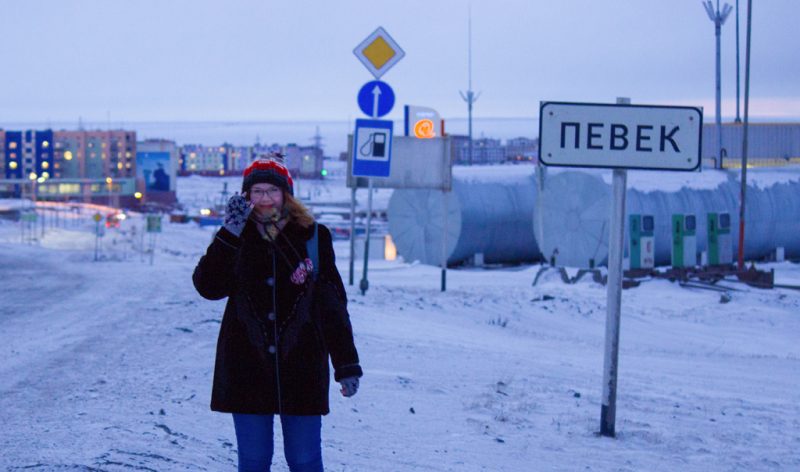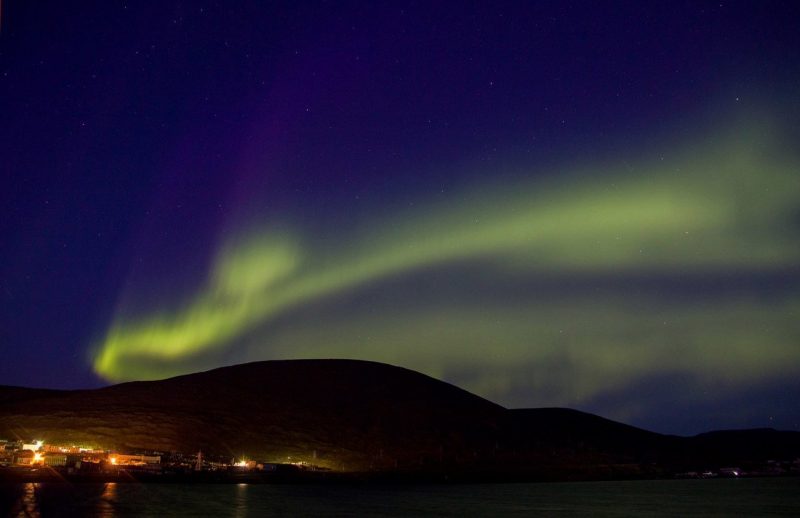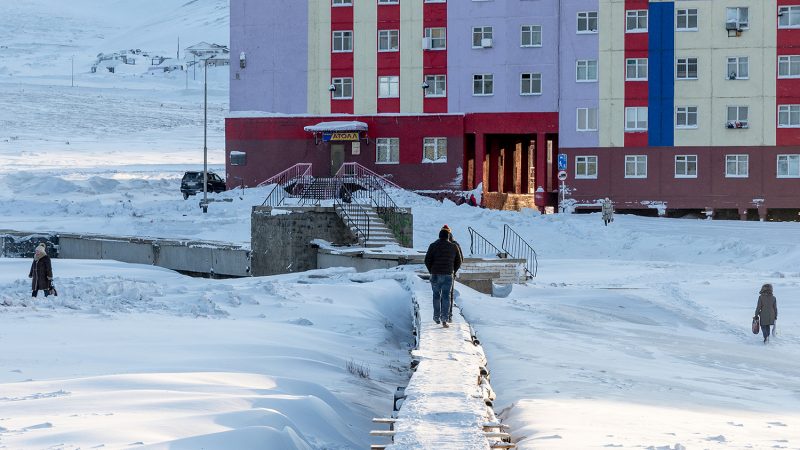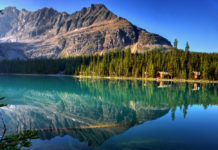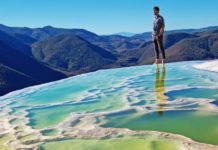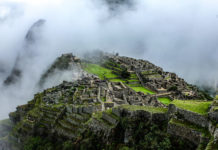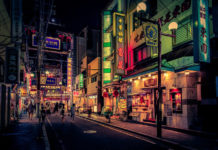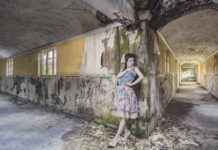In search of interesting impressions and strong emotions, tourists should visit the northernmost city of Russia. The unusual nature and harsh living conditions will quickly get rid of any depression, opening up the perception of new facets of reality.
Material Content:
A small history of the city of Pevek
Once it was a small village in the Chukotka Autonomous Okrug. Rich geological deposits interested Soviet geologists, and the first log houses in this remote corner of the country for newly arrived settlers were built in the 30s of the last century. Around the same time, another, larger city of the Arctic was founded - Norilsk.
Only 35 years after the creation of Pevek received the status of a city, it was in 1967.
Despite the harsh natural conditions and frosts, the population grew to exceed 10 thousand. With the construction of a power station and new mining enterprises, the urban infrastructure expanded - a kindergarten, school, hospital, cinema, museum, library appeared.
The airport became the connecting link between the big world and Pevek. Airplanes regularly deliver food and everything necessary, carry passengers. There is no other quick way, besides air, to the northern city. He detachedly perched on the edge of a scythe, fenced off from civilization on one side by the boundless Arctic Ocean, and on the other, by a deserted tundra.
This is a very convenient place for the re-education of prisoners - there’s nowhere to run too much, and plenty of hard work. A terrible page in the history of the city is uranium mines, where prisoners sentenced to prison worked.
Description of the northernmost city of Russia
Just as Murmansk has the unofficial name of the capital of the Arctic, Pevek is for some reason called the city of romantics and daisies.This motto of the Soviet era is written on local buses. Indeed, only a true romantic can fall in love with the harsh beauty of this city in the north. And daisies bloom here in great numbers during a short polar day.
The pride of the city has always been the seaport. Vessels delivered fuel to local enterprises, and minerals were taken away.
From the unfriendly northern elements of the sea, the harbor is protected by Raunatan Island, located directly opposite the coastline, at some distance from the mainland.
To decorate the city, houses here were painted in bright colors - pink, red, yellow. This is the only bright spot on the background of a low gray sky and a lead ocean during a long northern night.
Every quarter in this place was built taking into account climatic conditions. From time to time, hurricane winds rage in the city, the speed of which reaches 80 m / s. For a few days or weeks, life freezes. Sometimes, from the leeward side to the houses, whole mountains of snow are inflated, in which locals have to make tunnels that do not melt until spring to travel.
The city has a school, hospital, kindergarten. There is Internet, television and mobile communications. An art school, sports sections for children, a post office and a weekly newspaper are open.
Interesting Facts
The cities of the Arctic are characterized by a harsh climate. Pevek occupies a special place among them, because in its vicinity there are absolutely no trees. The polar day here lasts from May 18 to July 27. In this short period of time, northern nature blooms in all its glory - the tundra is dotted with daisies, yellow poppies and other flowers.
The plant world is diverse, which can not be said about the animal kingdom. In harsh climates, only birds and polar bears feel good, there is a chance to get to know them by moving a little from the city to abandoned villages. However, the jokes are bad with the bears, and it’s better not to look for meetings with them, but to take your legs away, seeing the traces of their stay.
Interestingly, people lived in these harsh places long before the birth of Christ. According to legend, not far from here lay a land route from Asia to America. Archaeologists have a lot to discover, exploring the northern lands of the Arctic.
The name of the city returns in those distant barbarian times when nomadic tribes fought for the right to inhabit the local lands.
The place where Pevek stood was littered with corpses, and the stench filled the surroundings, because the dead soldiers were not buried. "Peek" in Chukchi means "fetid mountains."
Standard of living, number of inhabitants
After the collapse of the Soviet Union, many Pevek enterprises closed. Although gold continues to be mined here, little money comes into the local budget. Many houses sadly look through the empty eye sockets of broken windows, talking about the tragedies of local residents. People were forced to leave the area, losing their jobs.
In terms of population, the city is one of the last places in the ranking of Russian cities.
The number of residents in 2018 amounted to a little more than 4 thousand people. Tourists and lovers of extreme relaxation visit these places.
The average salary in the city is 60 thousand rubles, but there are those who receive about 30 thousand, or even less. Given the local prices for vegetables, fruits and much more, the standard of living is much lower than in other regions of Russia.
What you should definitely visit and see
The entire Pevek can be walked in 20 minutes. It stretched along the coast, covering an area of only 60 km2. Buses carry passengers for free.
- You can visit the abandoned villages around the city. Everything, even once erected monuments, was taken out from there. A park has been created in the city where all these monuments are collected. This is what it is called: "Times a connecting thread."
- At leisure, it is interesting to see the local history museum or go to the Iceberg entertainment center-cinema.
- The city has an Orthodox church, an Internet club and a library.
- For active tourists it will be interesting to travel to the northernmost nature reserve of Russia “Wrangel Island”, the administration of which is located in the city of Pevek. The protected area occupies two islands of the Chukchi Sea - the Herald and the Wrangel.
Here, in the tundra, you can see unique Arctic vegetation, and many species of vascular plants of these places are not found anywhere else in the world. 62 species of birds nest on the islands, and the only large nesting colony of white geese has survived.


